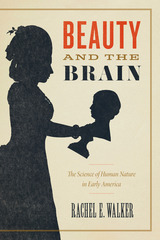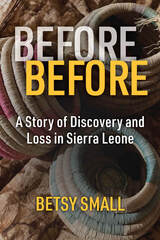168 scholarly books by Diaphanes and 6
start with B
168 scholarly books by Diaphanes and 6
168 scholarly books by Diaphanes
6 start with B start with B
6 start with B start with B
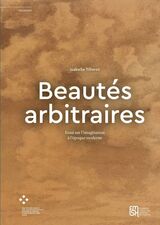
Beautés arbitraires
Essai sur l’imagination à l’époque moderne
Isabelle Tillerot
Diaphanes, 2021
Les beautés arbitraires ont une histoire qui précède la question esthétique du beau et la dépasse. Fortes d’un je ne sais quoi qui les fonde à l’écart des systèmes théoriques, elles renversent au XVIIIe siècle la construction sociale du goût. Il se peut que cette conquête soit le plus grand effort de la pensée moderne. Distinguer, du point de vue de l’histoire de l’art, ce que la notion d’arbitraire recouvre, telle est la vaste énigme dénouée dans ce livre.
La reconnaissance des beautés arbitraires se heurte à l’absolu d’un modèle antique qu’il est temps de contredire. Car il n’est rien de fixe, ni d’immuable dans l’arbitraire de la beauté, tout entier laissé à l’imagination du peintre, du poète, de l’architecte ou du musicien… Beauté chimérique opposée à la beauté véritable, elle revêt soudain valeur de rareté et de distinction et se transforme en beauté nécessaire, liée à l’invention de formes nouvelles qui peuvent plaire et toucher universellement. Entre caprice et convention, non-sens et vraisemblance, raison et sentiment, beautés essentielles et arbitraires échangent leurs rôles pour représenter différemment le monde et ses figures.
La reconnaissance des beautés arbitraires se heurte à l’absolu d’un modèle antique qu’il est temps de contredire. Car il n’est rien de fixe, ni d’immuable dans l’arbitraire de la beauté, tout entier laissé à l’imagination du peintre, du poète, de l’architecte ou du musicien… Beauté chimérique opposée à la beauté véritable, elle revêt soudain valeur de rareté et de distinction et se transforme en beauté nécessaire, liée à l’invention de formes nouvelles qui peuvent plaire et toucher universellement. Entre caprice et convention, non-sens et vraisemblance, raison et sentiment, beautés essentielles et arbitraires échangent leurs rôles pour représenter différemment le monde et ses figures.
[more]
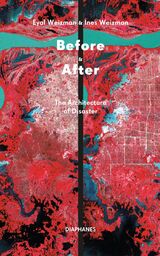
Before & After
The Architecture of Disaster
Eyal Weizman and Ines Weizman
Diaphanes, 2025
A study of the history of before-and-after images of catastrophes, bombed-out cities, and large-scale political transformations.
Image complexes of humanitarian and ecological upheaval document the world as a sequence of catastrophes. But who decides how events are presented, determines the resolution of our visual worlds, and controls the circulation or censorship of images?
Eyal and Ines Weizman trace the history of the before-and-after image from nineteenth-century photography to contemporary satellite images and discover a gap that not only conceals the devastating event: it is the human subject itself that is in danger of disappearing from the images. Do humanitarian work and the documentation and reconstruction of war crimes, in which people’s fates and rights should be at the center of attention, paradoxically enter a post-human phase? How can the gap between images become a site of critical counter-reading rather than a symbol of erasure?
In the context of their current research, Eyal and Ines Weizman discuss the history, present, and future of the paradigm of the before-and-after image in an exclusive conversation with Marie Glassl.
Image complexes of humanitarian and ecological upheaval document the world as a sequence of catastrophes. But who decides how events are presented, determines the resolution of our visual worlds, and controls the circulation or censorship of images?
Eyal and Ines Weizman trace the history of the before-and-after image from nineteenth-century photography to contemporary satellite images and discover a gap that not only conceals the devastating event: it is the human subject itself that is in danger of disappearing from the images. Do humanitarian work and the documentation and reconstruction of war crimes, in which people’s fates and rights should be at the center of attention, paradoxically enter a post-human phase? How can the gap between images become a site of critical counter-reading rather than a symbol of erasure?
In the context of their current research, Eyal and Ines Weizman discuss the history, present, and future of the paradigm of the before-and-after image in an exclusive conversation with Marie Glassl.
[more]
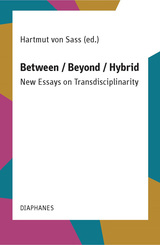
Between / Beyond / Hybrid
New Essays on Transdisciplinarity
Edited by Hartmut von Sass
Diaphanes, 2019
For years now, academics worldwide have been pushing for more interdisciplinarity and transdisciplinarity. Yet for all that, the very concept of transdisciplinarity has proved remarkably tough to define, let alone to enact. This book brings together prominent voices from the debate on transdisciplinarity in a manner that is itself transdisciplinary: scholars present papers from their own discipline, and those are followed by critical replies from different disciplines. The result is a vivid debate, new insights, and a growing confidence that there is something to be gained by approaching a topic from the outside and bringing new approaches to bear.
[more]
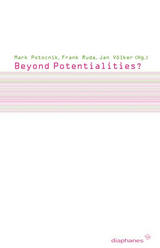
Beyond Potentialities?
Politics between the Possible and the Impossible
Edited by Mark Potocnik, Frank Ruda, and Jan Völker
Diaphanes, 2011
Nearly the whole history of political thought is spanned between two poles: one of founding, establishing, and justifying a stable and just order on one side and of justified transformation and necessary break with that same order on the other side. Between institution and emancipation, reform and revolution, the question of possibility is always arising for politics. Are there possibilities to change the order of society? Are there possibilities for a different justice? Where to find them and how to define them? Are they already present in the situation, or do they have to be actively created? Or does one have to rethink collective emancipation in a way that it does not rely upon given possibilities?
The question of possibility is raised in philosophy itself in different terms: as a question of potentiality and potentials but also as a question of the impossibilities of changing political order. In recent political discussions this question is more present than ever and is newly posed in fundamental ways by thinkers such as Agamben, Badiou, and Deleuze, or Lacan and Žižek. The present volume assembles articles that investigate this question and the new guise it took from different perspectives and highlight its relevance for contemporary political thought.
The question of possibility is raised in philosophy itself in different terms: as a question of potentiality and potentials but also as a question of the impossibilities of changing political order. In recent political discussions this question is more present than ever and is newly posed in fundamental ways by thinkers such as Agamben, Badiou, and Deleuze, or Lacan and Žižek. The present volume assembles articles that investigate this question and the new guise it took from different perspectives and highlight its relevance for contemporary political thought.
[more]
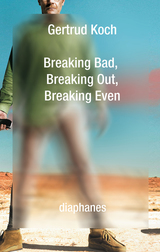
Breaking Bad, Breaking Out, Breaking Even
Gertrud Koch
Diaphanes, 2017
Breaking Bad is known for its grim and gritty outbursts of anger and violence. In the chaotic story of a meth-dealing high school chemistry teacher, time seems to collapse, and we feel as though the lives of the characters are moving inevitably closer to their ends. This warped perspective wends its way through virtually every aspect of the story, intensifying the meaning we attach to the characters’ precarious lives.
Hoping to cultivate a deeper understanding of the series, Breaking Bad, Breaking Out, Breaking Even offers a new way of approaching the program though its complex treatment of time. With its grotesque portrayal of life on the brink of death, argues Gertrud Koch, we can best view Breaking Bad as a black comedy between Chaplin’s Monsieur Verdoux and film noir. Koch takes readers through the ways in which this is accomplished through the show’s various visual elements and masterful temporal and narrative structuring. Full of fascinating insights, the book will appeal to the show’s many fans, as well as anyone interested in film studies, media studies, or popular culture.
Hoping to cultivate a deeper understanding of the series, Breaking Bad, Breaking Out, Breaking Even offers a new way of approaching the program though its complex treatment of time. With its grotesque portrayal of life on the brink of death, argues Gertrud Koch, we can best view Breaking Bad as a black comedy between Chaplin’s Monsieur Verdoux and film noir. Koch takes readers through the ways in which this is accomplished through the show’s various visual elements and masterful temporal and narrative structuring. Full of fascinating insights, the book will appeal to the show’s many fans, as well as anyone interested in film studies, media studies, or popular culture.
[more]

Breaking Ground
Thinking with Reiner Schürmann
Edited by Marcia Sá Cavalcante Schuback and David Payne
Diaphanes, 2025
An anthology of responses to Reiner Schürmann’s philosophical research, writings, and commentaries.
In recent years, academic interest in Reiner Schürmann’s philosophical work has grown significantly. His thought on the principle of anarchy and on broken hegemonies has begun to draw greater attention and has inspired recent works by Catherine Malabou and Giorgio Agamben, among others. In times of globalization and uni-dimensionalization, Schürmann’s deconstruction of the concept of the One, upon which western metaphysics and civilization has consolidated its power, is more than actual. It is urgent.
Breaking Ground gathers contributions from scholars from different parts of the world who have studied and engaged with Schürmann’s thought. This anthology is the outcome of the first international conference on Schürmann’s philosophical work held at Södertörn University, Stockholm, in 2021, addressing the legacy of his thought on broken hegemonies.
In recent years, academic interest in Reiner Schürmann’s philosophical work has grown significantly. His thought on the principle of anarchy and on broken hegemonies has begun to draw greater attention and has inspired recent works by Catherine Malabou and Giorgio Agamben, among others. In times of globalization and uni-dimensionalization, Schürmann’s deconstruction of the concept of the One, upon which western metaphysics and civilization has consolidated its power, is more than actual. It is urgent.
Breaking Ground gathers contributions from scholars from different parts of the world who have studied and engaged with Schürmann’s thought. This anthology is the outcome of the first international conference on Schürmann’s philosophical work held at Södertörn University, Stockholm, in 2021, addressing the legacy of his thought on broken hegemonies.
[more]
READERS
Browse our collection.
PUBLISHERS
See BiblioVault's publisher services.
STUDENT SERVICES
Files for college accessibility offices.
UChicago Accessibility Resources
home | accessibility | search | about | contact us
BiblioVault ® 2001 - 2025
The University of Chicago Press



